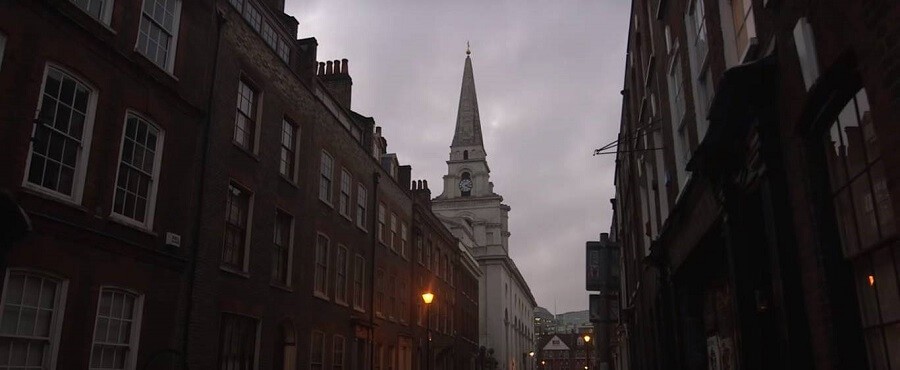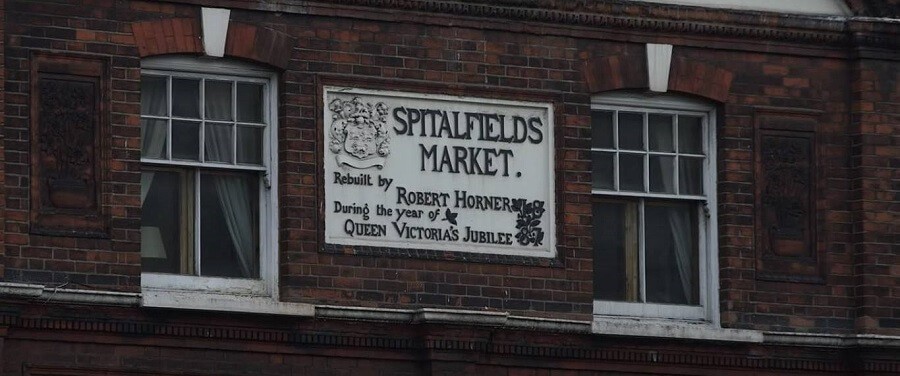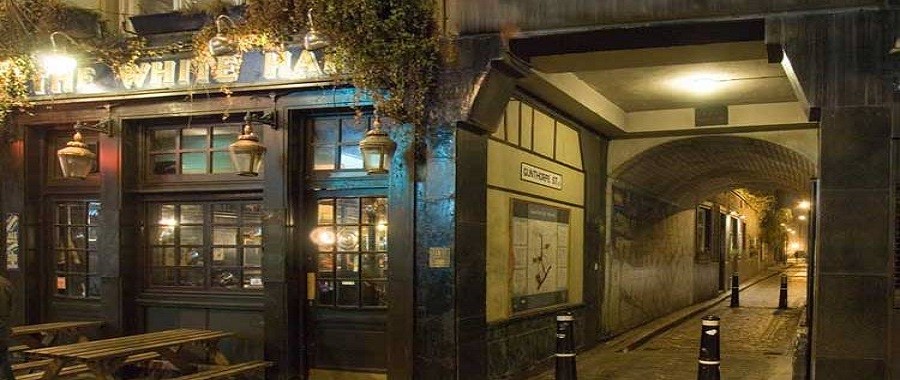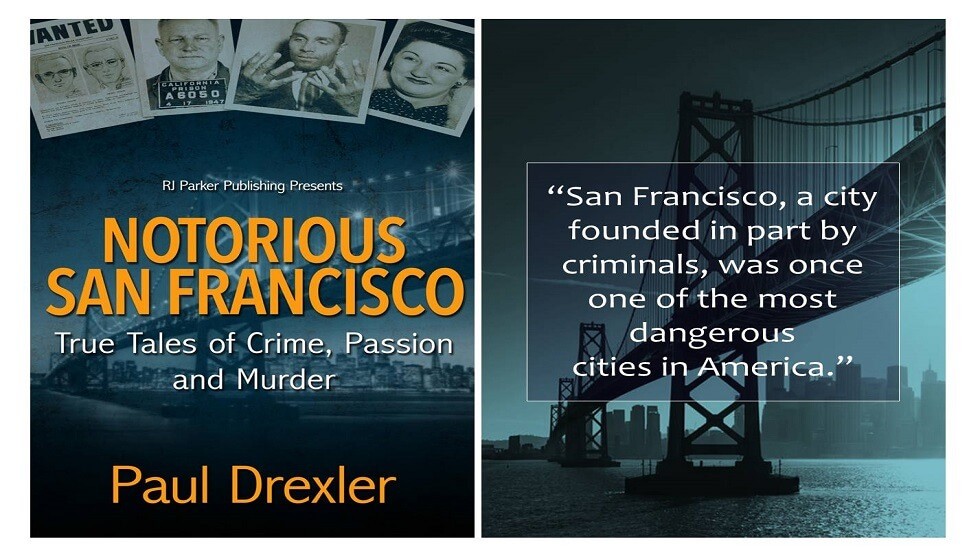Today, modern buildings, shops, apartments, and restaurants stand at many of the locations where the infamous Jack the Ripper operated in 1888. Yet the historical importance of these areas remains and one person has made sure that this history has not been lost.
The Jack the Ripper case is one of the world’s most intriguing unsolved serial murder cases which still, more than 130 years later, holds an air of horror and fascination. In the Whitechapel area of London in the summer of 1888, a brutal serial killer roamed the streets killing at least five women and mutilating their bodies. The police of the time tried desperately to catch this killer who seemed to have knowledge of the backstreets of London, medical training and was able to kill unseen leaving no clues behind.
Richard Jones founded the Jack the Ripper Tour of London in 1982 with a desire to bring his love of history and fascination with the Jack the Ripper case to the public. Today his walking tours are known as the original London terror walks and are a mainstay feature of London attractions. For just £10 per person, expert guides will take you on a historic journey transporting you back to 1888 and to the era of Jack the Ripper. Visit the murder sites, the doorway in Goulston Street where the Ripper may have left his chalk message, the Ten Bells pub frequented by the victims of the Ripper and the old cobbled streets where he prowled in the dead of night.
A familiar face in Jack the Ripper documentaries from the History Channel, Discovery Channel and Sky One, Richard Jones is also the author of multiple London history guide books alongside two acclaimed books on Jack the Ripper; Uncovering Jack the Ripper’s London and Jack the Ripper: The Casebook.
For more information on the Jack the Ripper London Tours and details of how to book, visit the Jack the Ripper Tours website. Here you will also find a fascinating and in-depth range of resources on the case; photos, videos, documentaries, a full resource section, and a regularly updated history blog. You can also check out a free e-book from Richard Jones, The London of Jack the Ripper, which is well worth a read. Here is a preview below!
Richard has very kindly given me some of his valuable time to answer some questions about his Tours and the case of Jack the Ripper.
Q&A with renowned Jack the Ripper expert Richard Jones
Q. I like that your Tours focus not only on the murders and the victims but also on the social conditions of the era and how they played a significant role in this case. Is it important to you that visitors gain a fuller more rounded picture of the case in this way?
RJ – I think it is hugely important that we all have a fuller and more rounded picture of the case. The problem with the Jack the Ripper crimes is that they took place against a much bigger backcloth of crime and society and, to fully understand them, and to understand what was going on, we need to put them into the area and the era in which they occurred.
Q. I found it interesting that although violence was prevalent within the areas the Ripper operated in 1888, murder itself was not a common act. How rare was it during that era for multiple murders to take place and with the level of mutilation that was carried out to the victims?
RJ – Violence and even murder were common, but murder of this type was uncommon. Most murders came about as a result of domestic violence, drunken brawls, and robberies that went wrong. The Jack the Ripper murders, however, seemed to be motiveless murders, committed solely for the pleasure of the perpetrator’s wish to mutilate the bodies of his victims. This was what people couldn’t grasp, and we probably can’t really grasp it today, hence the number of conspiracy theories with regards the crimes!

Q. The press coverage of the murders and the police investigation as they continued seems to have fuelled a great deal of suspicion and speculation often targeted towards specific communities. How much do you feel the news reporting of the case contributed to the public’s fear, panic, and opinions on what was happening?
RJ – I feel that the press coverage – or at least the coverage given by the more sensationalist elements of the press – helped fuel a huge amount of distrust and panic.
Q. The Ripper murders were particularly gruesome which prompted speculation at the time that the offender must have been insane. The precision and ability to get away unseen, for me, doesn’t seem to fit with this notion. What do you think about this idea of the state of the offender’s mental health?
RJ – I think it is difficult to judge the killer’s mental state. Personally, I agree with you that he didn’t fit the idea of being visible insane, both from the perspective of him being able to get away unseen and from the point of view of the fact that the victims obviously didn’t feel threatened by him, as they had no hesitation in going with him to the dark corners where the murders occurred.
Q. The piece of apron believed to have belonged to Catherine Eddowes and the chalk message on the wall found at Goulston Street has been a key discussion point in the Ripper case. The decision by the Metropolitan Police Commissioner to remove the message without taking any photographs for evidence is a curious one. What are your thoughts on why he may have made this decision?
RJ – I think the decision to erase the Goulston Street graffito was made, purely and simply, because the police feared the anti-Semitism it might generate. The decision was initially made by Supt. Thomas Arnold, the head of the local police division, H Division, and the Commissioner, Sir Charles Warren, gave his backing to the decision when he arrived at the scene. Interestingly, the decision backfired on them, since the decision to erase the message led to so much press speculation about its meaning, that it was public knowledge within 24 hours. Intriguingly, the press coverage doesn’t seem to have generated the anti-Semitism that the police feared.
Q. Why did the killer stop after the most brutal of his killings, that of Mary Kelly on 9th November 1888? As you discuss in your excellent documentary Unmasking Jack the Ripper, serial killers generally don’t just suddenly stop killing without something stopping them. Did the Ripper die, leave the area and continue killing elsewhere or maybe he was arrested and imprisoned for something else?
RJ – That is the major question! Something must have happened to him, but, since we don’t know who he was, we will, sadly, never know. He may have died, he could have moved somewhere else, he may have been put into an asylum, and, as you say, he may have been arrested for a separate offence and they didn’t realise who they’d caught.

Q. The theory of Randy Williams, author of Sherlock Holmes and The Autumn of Terror is really interesting in that he feels Jack the Ripper was actually three killers working together. I interviewed Randy about his book and his investigation which led to this conclusion as I know you have in this fascinating article on your website. What do you think about the possibility of the Ripper being a trio working together?
RJ – I always say to people that the one certainty about Jack the Ripper is that nothing is certain. There are so many possibilities, and one of the great things is that we now have the ability to share theories and information in a way that just wouldn’t have been possible in the pre-internet age. Randy has done some terrific research and work in the field and, whether people agree with his findings or not, it is great that people can think about what he says and draw conclusions accordingly. There are certain elements of the case, Israel Schwartz’s statement for example, that suggest there may have been more than one perpetrator, and, in the early stages of the police investigation, the police were following the line that a local gang was carrying out the murders.
Q. The police investigating these murders had an incredibility difficult job with little to no clues left behind at the murder scenes. There has however been criticism of how they handled the case. Do you think there were serious errors made in the investigation and could they, or should they, have caught the killer?
RJ – I think the police did make mistakes, largely because they hadn’t really dealt with this type of repeat killer before. There were things they could have done better (catch him, for example!), and I think they were a little too guarded with their information and suspicions, but, to be honest, given the fact that the killer wasn’t leaving any clues, there really wasn’t a great deal more that they could have done.
Q. The case is world famous and your Tours are renowned for their expertise and the experience provided for those seeking to know more. How many people do you get every month on the Tours and do you get many from different parts of the world fascinated by the Ripper case?
RJ – Our clients come from all over the world, and it is a real pleasure to discuss the case with so many different people. Each month we take around 3,000 people on the tours.

Q. I’m sure you are asked the same questions repeatedly about this case! I like that you make an effort for your Tours to be friendly, informal and discussions about the case that everyone attending can get involved in. Do you ever get questions that you’ve not been asked before and really make you think about an aspect of the case or that you even struggle to answer?
RJ – Very much so! Historically, I like to think that I am au fait with the facts, but it is amazing how so many people study the case in depth and then come on the tour and ask questions and discuss their own discoveries. Every so often, people bring up a point that really makes me think. I like to be perfectly honest if I don’t know the answer and tell them that I don’t know the answer but I will find the answer and will post it on the Facebook page or on the blog. You’d be surprised at how many of my blogs are inspired by questions asked by people on the tour. I also take a lot of school groups on the tour, and I can always guarantee that some of the pupils will come up with a question that I really have to think about.
Q. Do you believe the identity of the Ripper has already been found amongst the many theories today or do you think there is more to be uncovered? Essentially, one day, do you think we will ever know the answer?
RJ – I don’t think we will ever know the identity of Jack the Ripper for certain. Too much time has elapsed since the murders and too much of the evidence has now been lost or destroyed. It is highly possible that his (or her, or their?) name is amongst those already out there, but equally, there is just as much possibility that the perpetrator’s name has never been put forward as a suspect.
Thank you Richard for answering my questions and to Levi Clucas also for making this interview and article possible. Check out the Jack the Ripper Tours website for excellent resources and to book your place on a tour!



